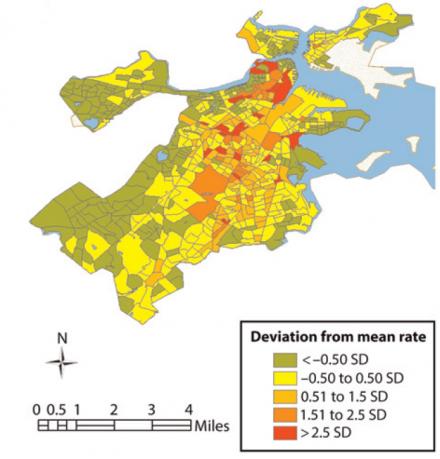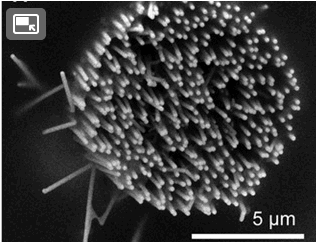Detailed analysis of drugs, alcohol & crimes across a city could help target prevention
As cities across America work to reduce violence in tight budget times, new research shows how they might be able to target their efforts and police attention – with the help of high-powered computers and loads of data.
In a newly published paper, University of Michigan Medical School researchers and their colleagues have used real police data from Boston to demonstrate the promise of computer models in zeroing in on violent areas.
They combined and analyzed information in small geographic units, on police reports, drug offenses, and alcohol availability at stores, bars and restaurants, as well as the education levels, employment and other attributes of the people who live there.
The result: a detailed map of violent crime “hot spots”, and a better understanding of factors that create the right climate for violence. Both could help a city’s leaders and police focus resources on the areas where they can do the most good.
The findings, made using funding from the National Institutes of Health, are published online in the American Journal of Public Health.
With the growing availability of data from local, state and federal sources, the team says the approach could be applied to any city or metropolitan area. It can show which micro-environments – down to blocks and intersections — need most attention.
In fact, they are currently preparing the same analysis for the city of Flint, Mich., which unlike Boston has some of the nation’s highest violent crime rates. Victims of that violence often end up in a hospital emergency room staffed by U-M doctors.
“This approach allows us to find predictors of violence that aren’t just related to an individual’s predisposition — but rather, allow us to study people in places and a social environment,” says Robert Lipton, Ph.D., lead author and an associate professor of emergency medicine at the U-M Medical School.
Lipton, who describes himself as a geographical epidemiologist, and several of his co-authors are members of the U-M Injury Center, which has federal funding to study and test ways to reduce injuries of all kinds.
Researchers have studied the relationship between alcohol availability and violence for years. But the new paper adds several new facets: arrests for drug possession and dealing, and citizen calls to 911 about drug use, as well as the broader geographic factors surrounding each type of establishment where alcohol is sold.
Details from state liquor board licenses, police records and the U.S. Census Bureau all factored into the analysis. Over time, other types of data could be added – so that researchers and police can see the impact of any factor that might contribute to violent behavior.
The goal: to help policy makers and police identify areas that have higher rates of risk factors that may combine to produce violence.
The Latest on: Predictive policing
[google_news title=”” keyword=”predictive policing” num_posts=”10″ blurb_length=”0″ show_thumb=”left”]
via Google News
The Latest on: Predictive policing
- Breaking Barriers: Leveraging Artificial Intelligence to Tackle Global Financial Crimeson April 27, 2024 at 8:33 pm
Financial crimes pose a significant global issue, manifesting in various forms and causing physical, psychological, or financial harm. These crimes often result in penalties from state or other ...
- AI in criminal justice – the risks of dehumanizing law enforcementon April 26, 2024 at 3:53 am
In the second of our reports, we hear from a range of experts on how adopting AI without awareness of risks – or having the requisite skills – could dehumanize systems that ought to focus on ...
- AI in criminal justice – is tech simply automating deep human biases?on April 25, 2024 at 5:30 am
A Westminster legal policy forum debated the use of AI in criminal justice. The findings were fascinating – in some cases, troubling.
- The FBI director's warning was short on details.on April 24, 2024 at 10:47 am
Conspiracy theories are flooding the internet after FBI Director Christopher Wray announced that he is “increasingly concerned” over the potential of a large-scale terror attack in America.
- How does AI learn its biason April 23, 2024 at 4:02 am
Artificial intelligence (AI) promises to revolutionize our world, but it has a dark side: bias. AI systems can unintentionally inherit human prejudices, leading to unfair and sometimes harmful ...
via Bing News











